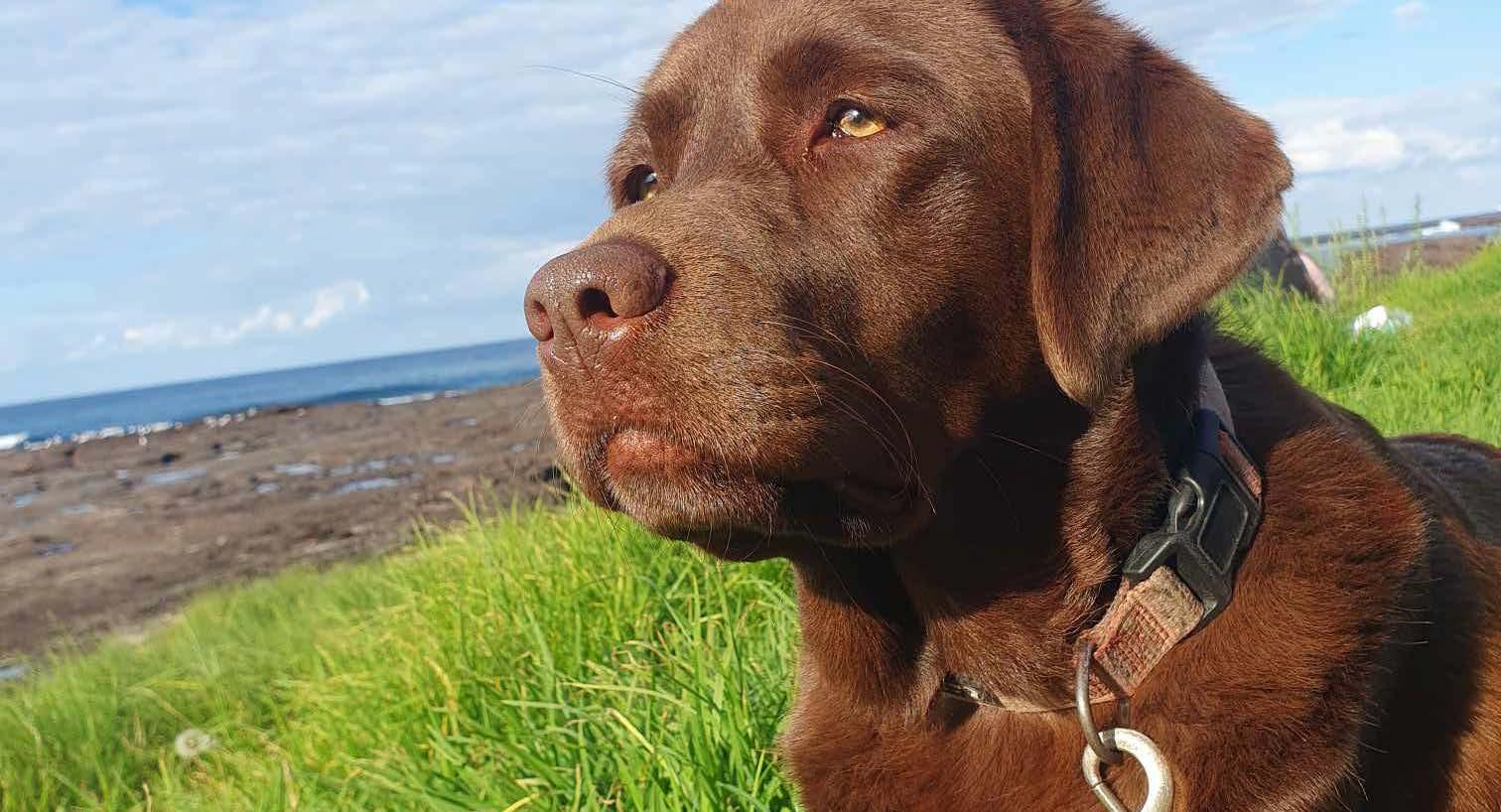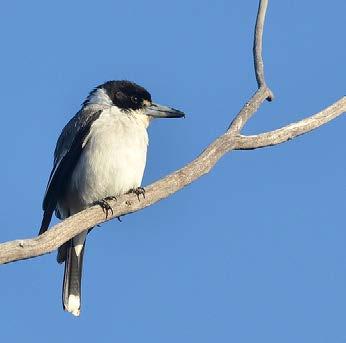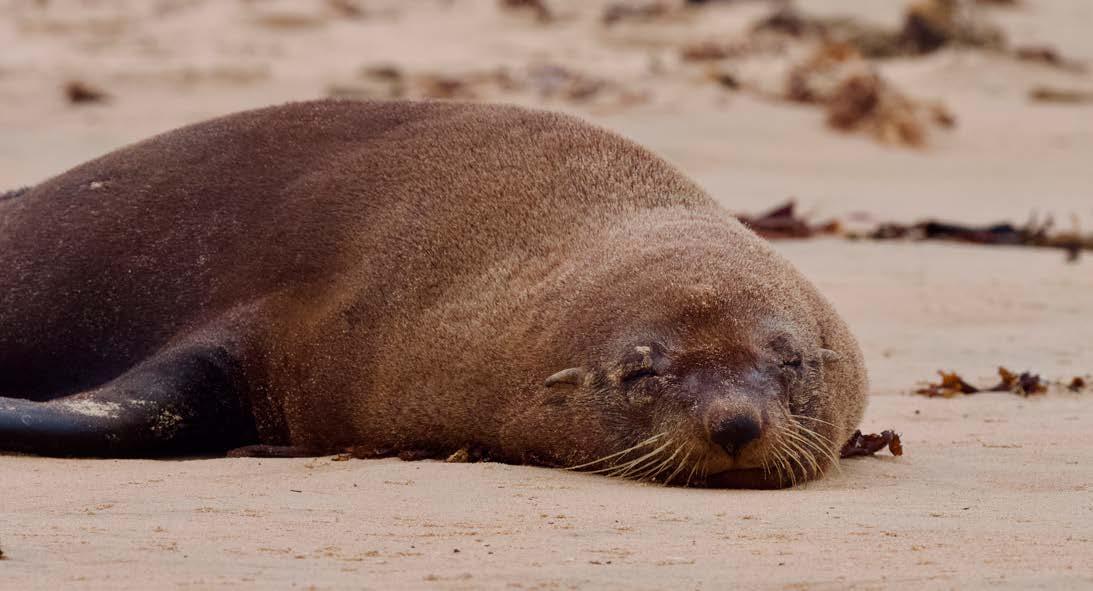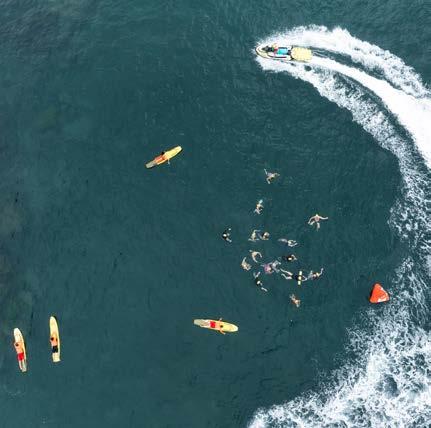




‘Crossing Paths’ is on at historic Retford Park in Bowral

The Illawarra Association for the Visual Arts (IAVA) will hold a special opening event for their new exhibition, Crossing Paths, this Saturday, 22 February from 2-4pm. Meet the artists, discuss their works, and enjoy drinks amidst the beauty of Retford Park. This informal gathering will provide an opportunity to engage with the creative minds behind the
exhibition and discover the inspiration behind their artworks. Crossing Paths features works by 25 artists at the White Cottage Gallery in historic Retford Park, Bowral. Expect a diverse range of contemporary artworks. Pictured above is Susan McAlister in her studio (photo by Judy Bourke). More info in our free community calendar
Enjoy meditation, Tai Chi and a film screening at Nan Tien Temple
To mark International Women’s Day, join a Meditation & Tai Chi event, guided by the Venerables at Nan Tien Temple, where mindfulness meets kindness.
It’s a fundraising event for Women Illawarra, and a chance to immerse yourself in mindful practices like meditation and Tai Chi.
Engage in meaningful conversations with Women Illawarra staff, event supporters, and the monastics, as we work to inspire community over competition and prioritise health and well-being.
The event includes a special free screening of the international award-winning local short film Frances (35 min) by award-winning filmmaker Sharon Lewis, Vice Chair of Screen Illawarra. Sharon will be joined by Juliet Scrine, who stars as

Frances, for a heartfelt discussion on the film’s themes and its reflection of the struggles and resilience of women.
Show your support for women in need through this charity meditation fundraiser, so together we contribute to real-world change.
For more information, click here.

21 Feb Greenplan Plant Sale at Wollongong Botanic Garden
21 Feb
7 Minutes in Heaven –Speed Art
23 Feb
Rock Swap with Illawarra Lapidary Club
25 Feb NICC’s Business & Bowls

2 March Clean Up Australia Day
15 March Common Ground with Steel City Strings
16 March
GreenFest fun day
23 March
Darren Coggan in Concert FREE
Share events to our digital calendar
Words & photos by Tyneesha Williams

Acolourful celebration of Vietnamese Lunar New Year was held on Saturday, February 15 at Dapto Ribbonwood Hall.
Organisers Teresa Tran OAM and Hong Phong Le OAM said the family event was an important celebration for the Vietnamese community of Wollongong.
“Everyone praised the diverse cultural program,” Teresa said.
“The atmosphere of the festival was bustling, jubilant, energetic, and joyful, showing that the Vietnamese community has always strived to contribute to the Australian multicultural society, which is full of enthusiasm, dynamism, and solidarity.”
The community was welcomed with
traditional songs and a performance of the Lion Dance in honour of the Year of The Snake 2025. Firecrackers were set off to ward off bad spirits and welcome good luck.
“Our main purpose in organising cultural events like the Lunar New Year is to empower our Vietnamese members and their descendants to discover and cherish their heritage,” Teresa says.
Once inside, guests were treated to speeches from Teresa, who is the president of the Vietnamese Community in Wollongong, Wollongong Lord Mayor Tania Brown, Member for Cunningham Alison Byrnes, MCCI CEO Chris Lacey and Paul Huy Nguyen of the Australian Vietnamese Refugees National Council. The guests took part in an incense-

“The atmosphere of the festival was bustling, jubilant, energetic, and joyful.”
– Teresa Tran OAM
burning ceremony to honour the ancestors of the Vietnamese community.
“If you have a clear sense of identity, it will ignite a passion to succeed in life and make a positive contribution to the country that you are living in,” Teresa said.
“This is an opportunity for us to unite everyone and foster solidarity and sympathy between generations. This is also our Vietnamese Australian
community’s contribution to enriching Australian culture with diversity and vibrancy.”
The night proceeded with colourful performances and entertainment from community members young and old.
2025 marks the 50th anniversary of Vietnamese settlement in Australia after war. Teresa and Phong are in the process of planning some important events for the community to celebrate.


The celebration was held on Saturday, Feburary 15 at Dapto Ribbonwood Centre.











Organisers Teresa Tran OAM and Hong Phong Le OAM said the family event was an important celebration. “Everyone praised the diverse cultural program,” Teresa said. “The atmosphere of the festival was bustling, jubilant, energetic, and joyful, showing that the Vietnamese community has always strived to contribute to the Australian multicultural society, which is full of enthusiasm, dynamism, and solidarity.”

By Jeremy Lasek

Thegrand vision for an epic Illawarra escarpment walk linking the Royal National Park to Wollongong’s north with Cambewarra Mountain in the Shoalhaven is gaining significant support.
The proposal which was first proposed in the 1970s and has been resurrected by former Kiama Mayor Neville Fredericks would see the creation of a track winding along the Illawarra escarpment for more than 150 kilometres.
Neville believes when it’s completed the track will be one of the best walks in Australia and will have appeal to trekkers from across Australia and the world.
Much of the work to the north has already been completed linking the National Park and Sublime Point above
Austinmer. The big challenge which lies ahead will be convincing local and state governments that this is a project worthy of their support and investment.
Shellharbour Mayor’s support Last month, Shellharbour Mayor Chris Homer was quickly out of the blocks to throw his support behind the ambitious track proposal.
He told the Illawarra Flame he was a “huge supporter” of the extended escarpment track which he said would “be phenomenal”.
Mr Homer says as the chair of the regional Illawarra Shoalhaven Joint Organisation (ISJO) of local councils he’s keen to put it on the agenda.
Wollongong Council on board
“I will do everything in my power to move this forward,” Chris said. And it seems he’ll have no trouble getting Wollongong Lord Mayor Tania Brown on board.
“Wollongong Council fully supports the Great Southern Walk project and the opportunity to highlight our iconic Illawarra Escarpment,’ Cr Brown said.
“It is an ongoing project, and we will continue to engage and support the NSW Government by planning and delivering connecting infrastructure to enhance what is already a major tourist attraction for our region.”
Project is a winner, says Ward State Member for Kiama, Gareth Ward, is also convinced the extended escarpment walk will be a winner.
“I am right behind Neville’s plan to see an escarpment walk,” Mr Ward said.
“The Illawarra escarpment is like none other anywhere in the world and we should ensure people can access, enjoy, and absorb the experiences it has to offer.
“Our region had some of the most beautiful and breathtaking walks; from the Kiama-Gerringong Coastal Walk, the Illawarra Fly, Seven Mile Beach and the Minnamurra Rainforest – our region is blessed with so many incredible environmental delights that should be shared with the region, state, nation and the world.”
Mr Ward doesn’t believe extending the escarpment walk through several areas of sensitive bushland and forests is a bad thing.
“As a passionate advocate for our environment. I believe the best form of conservationism is to ensure we can open up our environment so people can become aware of what is important to protect. That’s why I want to see investments in projects like this.”
NSW Government support needed
Those investments would be required from the NSW Government and the state Member for Wollongong Paul Scully is standing by his government’s commitment to date on escarpment walks.
“The NSW Government has invested in the Great Southern Walk, including the recently repaired and re-opened Wodi Wodi Track,” Mr Scully said.
“If there are feasible opportunities to extend the Great Southern Walk they should be considered.
“We have a unique environment that already attract a range of visitors and projects that embrace and enhance this environment to encourage visitors to enjoy it, while protecting it, should be very seriously examined...”

“If there are feasible opportunities to extend the Great Southern Walk they should be considered.”
– Paul Scully, Member for Wollongong
By Oguzhan Dincsoy

“I started the group because I wanted a page specifically for the Illawarra, where its members could ask for support and guidance, from locals.”
– Maddi Brady

Afteradopting Bruiser, her Labrador Retriever, in 2019, Maddi Brady started the Facebook group Illawarra Dog Owners to bring together dog lovers and owners across the Illawarra region.
“I started the group because I wanted a page specifically for the Illawarra, where its members could ask for support and guidance, from locals, with knowledge about resources available to them, within an acceptable distance,” Maddi said.
“Often, when you join groups, they’re for such a large area, that suggestions can be out of reach.”
Illawarra Dog Owners now has more than 2100 members and is a voluntary service run with another admin.
Since becoming a mum and working, Maddi spends about two to three hours a week on the group and is still committed to running it as one of the original founders. “It was my group, so I need to ensure I keep up with the running of it.
“The members are very welcoming and helpful to each other.”
Born and raised in Wollongong, in her spare time Maddi loves horse riding, 4x4ing and camping, which Kendall, her other Labrador, really enjoys too.
Maddi, an assistant online manager at Woolworths, draws on her professional communications skills to help run the group.“My [Woolworths] role mostly requires me to be able to communicate regularly with my team in order to get
the trucks dispatched,” she said.
“It also helps with communication in the [Illawarra Dog Owners] group between my other admin and I to make sure the group runs smoothly and with members on group rules and help with enquiries.”
Some of the challenges Maddi faces in running the group are members who forget or disregard the rules. “People sometimes don’t agree to the rules. They get upset if we enforce them. I don’t enjoy confrontation, so enforcing the rules does put me outside my comfort zone.”
To ensure content sticks to the rules, Maddi uses the Facebook admins assist features. “We have post approval turned on, as well as the Facebook AI admin assist. It monitors for certain words that are set out by us. It then sends us a notification if it thinks there is a rule violation.”
At first Maddi wanted the group’s focus to be informative, but she now allows business-related posts.
“I didn’t want the page to be flooded with advertising, causing the support questions to get lost, but we since agreed to allow businesses to advertise both on the monthly advertising thread as well as periodically on the main feed,” she said.
Members are also encouraged to tag businesses in relevant posts. “We ensure all of the businesses in our group are Illawarra locals in order to keep the information local.”

Steel City Strings is collaborating with community gamelan ensemble Suwitra Jaya for part of this concert inspired by folk music traditions from around the world including Australian composers Peter Sculthorpe, Gerard Brophy and Christopher Sainsbury.
Bowral Memorial Hall, Sun 9 March 2.00pm
Wollongong Art Gallery, Sat 15 March 7.30pm Berry School of Arts, Sun 15 March 2.00pm
For bookings scan the QR code or go to: steelcitystrings.com.au/events-calendar/

Tickets $15 – $65 Group of 5 or more $40 per person

Renovated and well-equipped meeting rooms and office space in the village centre. Enquire now for availability.
26A Walker St, Helensburgh Phone 02 4227 8181 wollongong.nsw.gov.au/centres

By Andy Lawrence

“The kids love the blue eggs nestled amongst the brown eggs of our everreliable ISA Brown.”
“The chick was a tiny little morsel of bones and fluff and coveted to the point where I needed to use an egg-timer to distribute cuddling rights.”
– Andy Lawrence
Early in the New Year, I ordered some fertile chicken eggs to hatch in my small incubator. I often do this to replace old laying hens or inject new breeds or genetics into my flock. It also provides my children with a beautiful opportunity to learn how to care for baby chicks, not to mention teaching them about life cycles and where our food comes from.
I ordered a dozen Araucana eggs, a breed of chicken that originates from Chile and is known for their blue-shelled eggs and friendly nature. They make great pets and the kids love the blue eggs nestled amongst the brown eggs of our ever-reliable ISA Brown.
This time I chose a new egg supplier, one whose birds win prizes at chook
shows with the hopes of gentrifying my chicken flock.
The eggs I received were tiny. I realised too late that the breeder’s chooks were the bantam variety and lay sparrow eggs, which are about as useful as spatchcock… In that they taste the same but fail to fill your stomach.
After three weeks of incubation, a measly single egg hatched. My two young children were still very excited – as they always are – for a little chicky to cuddle. The chick was a tiny little morsel of bones and fluff and coveted to the point where I needed to use an egg-timer to distribute cuddling rights.
Fast forward a week and my three-year-old was having her allotted
cuddle time while I hung the washing. My eldest interrupted me with, “Muummm, she’s putting the chicken in the water”, in a bored kind of tone as if this kind of thing happens all the time – which look, it does.
Luckily, it was a shallow puddle made from watering the garden. Nevertheless because the chick was so young, it started losing body heat quickly and would have died within an hour had I not carefully blow-dried it to warm it up. I popped it back in its cage under the heat lamp to rest, then packed up the kids to visit friends in Sydney for the evening.
Later, as I lay reading in bed, my husband came in asking, “Is there supposed to be a chick in the cage?”
My heart dropped. I went to investigate and just as he said, no sign of the chick and no sign of tampering with the secured and latched cage.
I did a quick check of the yard, already knowing I wouldn’t find it and already knowing how it had disappeared.
The chick had a fatal visit from a butcherbird.
If you haven’t heard of the butcherbird before, you have probably heard its call, which is high pitched and has a familiar association with the Australian bushland. The birds are in the same family as magpies and they are just as aggressive, though not so much towards humans.
They are known to skewer their prey on sticks or between branches as a type of ‘larder’ to hold their dinner (usually a reptile, small mammal, large insect or bird) in place while they eat it, or offer it as a mating gift or as savsies for later.
Australian bird owners know them as the vicious songbirds come hither to scalp their pet budgie.
Butcherbirds are known to lure birds (particularly budgies and cockatiels) to the edge of their cages, where they use the sharp hooked point on the end of their strong beak to pull pet birds, or parts of them, through the bars of their cage, like a fast food pick-up.
I actually like butcherbirds and their beautiful songs when they’re not trying to kill my pet birds. I have had at least six past run-ins with the black-headed, grey
birds in my life. My poor childhood budgie survived two attacks before finally succumbing to his injuries from a third at the ripe old age of 16. I have never had problems with them stealing chicks before, and I’ve hatched a lot of chicks.
There is no real moral to this story other than the acknowledgement of the short life and tragic death of a little chick who survived being cooked alive in a pretend microwave, who then survived being plunged into a cold puddle, only to be eaten by a butcherbird hours later.
Sometimes I wonder about the balance between the benefits of exposing my children to the animals of this world and the drawbacks of exposing these animals to my children. Despite the obvious benefit of familiarising my children with non-human creatures, they are inevitably and inadvertently cruel in their quest to understand the world around them and how to be in relationship with those creatures.
Thinking back to my own childhood, I cringe to think of the guinea pigs we released into the dam to see if they could swim. I have sworn not to let my kids enact naive cruelty on their animals but my experience so far has shown me that I cannot possibly be vigilant enough to curb every questionable action.
Perhaps the guilt that laces my memory at my own misendeavours with animals is the echo of an important rite of passage that teaches empathy for animals and the conceptualisation of the consequences for our actions.
I am, of course, not advocating a loosening of supervision vigilance. And perhaps these musings are simply a way to abdicate my guilt. But I’d also like to think that it’s a broad and forgiving standpoint for parents caring for kids and pets simultaneously. A little compassion for the realities of life with small kids and animals.
The whole situation sparked conversations about caring for our animals, life, death and the animal kingdom with my kids that became the gift in the little bird’s death.
Rest in dry, warm, butcherbird-less Peace, Ducky.

“Sometimes
I wonder about the balance between the benefits of exposing my children to the animals of this world and the drawbacks of exposing these animals to my children.”
By Amanda De George

“The seal had shifted from its position earlier in the day and was being watched over by an ORRCA volunteer, the surrounding sand taped off so that it could continue its snooze in peace.”
– Amanda De George
Wereyou lucky enough to see the seal hauled out at Towradgi beach last week?
A haul-out is when a seal temporarily leaves the water to rest or recuperate. If you’ve seen the seals down at the break wall in Narooma launching themselves out of the water and up the rocks, fighting and shuffling about for a better, sun-drenched position, you’ll know that they are as happy on land as they are in the sea.
But there’s something about seeing these large marine mammals out of the water, mid-way up on the sand – as was the case with the most recent haul-out – that just looks odd. And when they’re laying there, not moving around much at all, it’s easy to be concerned.
This Australian fur seal had been fully assessed by the team from ORRCA (the Organisation for the Rescue and Research of Cetaceans in Australia) the day prior and was deemed healthy and was likely just resting after some big seas. This isn’t always the case and if you do come across a hauled-out seal it’s always best to contact ORRCA on 9415 3333, so they can check it over.
While some of you would have stumbled across this lovely male during your morning beach walk, I was tipped off by someone who had seen the sighting posted on social media; you’ve
got to love the nature enthusiasts hotline! By the time I made my way onto the sand, the seal had shifted from its position earlier in the day and was being watched over by an ORRCA volunteer, the surrounding sand taped off so that it could continue its snooze in peace.
And here’s the thing, I’m a big fan of sharing wildlife sightings with others. I believe the more people, especially kids, who can get to see these wild animals in the flesh, the more people will want to protect the animals and their habitat. It’s just so much more meaningful watching these mammals stretch and yawn and blink sleepily into the sun, when they are right there in front of you.
But humans will be human and sometimes curiosity gets the better of us and we want to get closer to the animal than the allowed 40 metres.
Remember, seals are surprisingly fast on land, have huge teeth and they can and will bite if they feel threatened. That includes if you have a dog with you or get between the seal and its escape route, the ocean. And that’s especially true if they’re recuperating and feel vulnerable.
They are definitely one of those animals that are best admired – okay, ‘oohed and aahed’ over because they are absolutely adorable – at a distance.
Did you get to see the seal? We’d love to see your photos.



Thur
Feb 5
Thur
Mar 5
Thur Apr 2
Thur May 7
Thur
June 4

Music & Tea | Wollongong Art Gallery | 11am
Entry Free: Donation Appreciated
Ocean Whisperings: Penelope and Other Stories
Olive Cullen mezzo-soprano | Ronan Apcar piano
Clarinet Trios by Beethoven and Brahms
Dan Thomas clarinet | Elizabeth Ring cello
Maria Stadnik piano
Fantasies for Cello and Piano
Shostakovich, Prokofiev and more...
Alexander Boyling cello | TBA Piano
The Chameleon: Clarinet Reflections
Bassi, Mozart, Gershwin, D’Rivera, Weber...
Anna Chung clarinet | Catherine Shin piano
Shades of Romance
Strauss, Wieniawski and more...
Benjamin Lam violin | Dono Ng piano
YOU CAN BOOK ECA SERIES 6 2025 NOW AT
Humanitix: Emerging Concert Artists 2025 Tour
Wollongong Art Gallery | Wombarra | St Jude’s Bowral For more information, contact Felicity at: e: inspiremusicaust@gmail.com | ph: 0408 422 427

By Emma Rooksby, coordinator of Growing Illawarra Natives

Thisis another article that didn’t start with a plant, but instead with an insect! Last week we had the adventure of the non-Stink Bugs on an Illawarra Flame Tree (Brachychiton acerifolius), and this week it’s the surprise appearance of a butterfly with a very specific plant relationship.
Growing Illawarra Natives
I’d long known of this butterfly, the Bright Copper (Paralucia aurifer) but never had much hope of seeing it as it is considered to be very local, associated particularly with Blackthorn (Bursaria spinosa), a beautiful shrubby tree that I don’t spend nearly enough time around. The countless hours I spend pottering in the garden or in my tiny backyard nursery are not hours when I expect to
see Bright Copper Butterflies, as there are no Blackthorns in the garden. Imagine my surprise then when I saw one perching cheerfully among my native ground covers! It took me a while to register that I was actually seeing a Bright Copper butterfly, despite its almost unmistakeable appearance, with four orange blotches set against a dark brown or black background on both upper and lower wings. What was it doing at my place, with no Blackthorn to be seen? Had it been blown off course? Did I have a secret Blackthorn in the garden somewhere?? Off I went, down the rabbit hole of
butterfly behaviour and plant preferences! And I found out all sorts of things.
Bright Copper butterflies don’t only use Blackthorn as a larval food plant; they also use Orange Thorn (Pittosporum multiflorum), which is one of the most common plants in our garden. So perhaps they’d been attracted by the Orange Thorns?
With the wings in closed position, the bright copper colours of this butterfly are invisible. But the tones and patterns of the underwing are beautiful in their own way too.
I also found out that there are three or four generations a year of this species, with adults most abundant in November and February. Three to four generations in a single year – wow!
Their larvae are attended by ants in the Anonychomyrma genus, which help protect the larvae from predators and parasites as they develop. And I learned that male Bright Coppers appear to form leks (aggregations of males who gather to engage in competitive displays and courtship rituals, and to establish territories). Who knew?
I wonder how large their territories are? How big an area does a creature that lives for only a couple of months require? So much more to learn.
But now to the grand finale. By unbelievable coincidence, as I wandered
out into the reserve near our house to check on deer damage, what did I run into but an unexpected Blackthorn (Bursaria spinosa), growing happily beneath the giant Blackbutts (Eucalyptus pilularis) together with a mix of rainforest seedlings and masses of vines and ferns.
This was a very welcome find, but it did make the question of the territory size of the Bright Copper butterflies a bit more urgent.
Were they coming over to our garden from a plant 30m away? Or were the Orange Thorns the explanation? I simply cannot tell without further investigation.
But let it be said that the Blackthorn is a most beautiful and useful plant. Its copious flowers, generally present in late spring and summer have a heavenly honeyed scent. Its dense, thorny foliage provides a great haven for small birds. And its interesting-shaped fruit give the plant its scientific name.
‘Bursa’ means ‘purse’ in Latin, and at some point the person naming the Bursaria genus would have noted that its fruit looked like the sort of purse that was in use at the time. Not that useful to us now, as I’ve never seen anybody with a purse in that shape, but anyway, that’s the origin of the name!
Now I get to stake out the Blackthorn tree and see how many Bright Copper butterflies I can find on it.

“I learned that male Bright Coppers appear to form leks (aggregations of males who gather to engage in competitive displays and courtship rituals, and to establish territories). Who knew?”
– Emma Rooksby

By Marcus Craft

“This is a light (1580kg), frontwheel drive EV so it punches off the mark with plenty of gusto”
– Marcus Craft
TheGWM Ora GT is the top grade in the Ora line-up and has a drive-away price-tag of $46,990 at time of writing.
The Ora has a single electric motor –producing 126kW of power and 250Nm of torque – and that’s mounted towards the front of the vehicle.
It has a 63kWh lithium-ion nickel manganese cobalt (NMC) battery and a claimed driving range on a full charge of 400km (WLTP).
This is a light (1580kg), front-wheel drive EV so it punches off the mark with plenty of gusto. Around town and in the suburbs the Ora GT is a zippy little car, great for driving along parked-in streets and nabbing those hard-to-get-into city parking spots.
Packing groceries into the boot is a big ask because there’s not a lot of space back there, but put the back seat down and you instantly free up a lot more.
The 2025 GWM ORA GT has the maximum five-star ANCAP safety rating as a result of testing in 2022. This vehicle has an eight-year/unlimited km battery warranty.
As for the Ora GT’s energy consumption, on a full charge, we used 26 percent on the drive from Sydney’s Marrickville to just south of Wollongong, a distance of 81km.
After a few days of mixed driving –suburban streets and the highway – we charged at one of the NRMA DC units in
Wollongong’s Stewart Street East car park and managed to get from 9 percent to 85 percent in 48 minutes on a maximum 75kW charger. (The dash-indicated estimated time to charge from 9 percent to 80 percent was 33 minutes.)
The Ora GT’s WLTP range is 400km with an official combined energy consumption of 16.8kWh/100km. Our usage came out at 16.2kWh/100km after a mix of open-road and urban driving during the week of testing.
It has a charged cable (in a bag in the boot) and it can be charged at home or at a public charging location.
The Ora’s exterior styling is not everyone’s cup of tea. It has a polarising goggle-eyed look – concerning only if you choose a car based on its looks. Inside is all rather cosy, but there is room enough upfront for driver and passenger, and the back seat can comfortably cope with two adults, or three kids, but three adults would be a real squeeze.
Overall, the Ora GT is a nifty little car and very well-suited to city and suburban life.
It’s light-on in terms of rear cargo area space and its touchscreen unit is frustrating, at least initially, but the Ora GT’s positives outweigh its negatives.
If you’re in the market for a well-equipped, smooth-driving EV, consider this one.


By Greg Knight, convenor of the Illawarra branch of Renew

“Once operational, a CEZ is expected to lower electricity costs, improve grid reliability, and make energy access more equitable”
– Greg Knight, Renew Illawarra
Ata presentation at the University of Wollongong on Thursday, February 19, I outlined how a Community Energy Zone (CEZ) could be implemented in the local area.
A CEZ would function using Consumer Energy Resources (CER) along with Community Batteries and Vehicle-to-Grid (V2G) technology, creating a local energy “bank” that allows excess power to be stored and distributed efficiently. This approach reduces reliance on large energy providers while increasing local resilience.
Once operational, a CEZ is expected to lower electricity costs, improve grid reliability, and make energy access more equitable. By reducing peak loads on the grid, it can also minimise the need for costly infrastructure upgrades, such as additional power lines and substations.
The key benefits of such a system include: Fair returns on solar and battery investments; Community governance over energy distribution; Lower electricity prices for all consumers.
Many households are already moving toward a CEZ model through the adoption of Consumer Energy Resources such as solar panels, home batteries, heat pump hot-water systems and EVs. Industries and institutions are going further, installing microgrids – smaller, private versions of CEZs – to enhance
energy reliability and reduce costs.
Last year, Queensland’s Energex announced plans to develop Local Renewable Energy Zones (LREZ).
According to Energex, “LREZs will be a complete local energy system for communities coordinating generation from rooftop solar installations, electric vehicle charging, customer batteries, hot water, community and network batteries, within the existing network infrastructure – to support a renewable energy transition led by customers.”
Despite the clear benefits, outdated regulations remain a major obstacle to implementing CEZs.
Reforms are necessary to enable community-driven energy solutions and prevent “integration” into an inefficient, centralised system designed for large, remote fossil-fuel generators.
The challenge now is to push for regulatory changes that will allow CEZs to thrive. Without this effort, we risk ending up with a suboptimal system that doesn’t serve consumers well.
A key element is to lobby local politicians to change the regulatory environment for distribution networks like Endeavour Energy to allow local generation and storage, facilitate third-party access along with new entities like Distribution Service Operators and local power operators.


